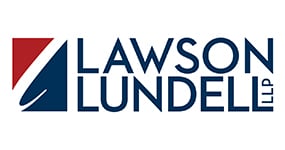Since the Patent Act was amended in 2018, Canadian intellectual property law has undergone a sea-change in how patents are filed, prosecuted, and enforced. One of the most dynamic alternations to existing patent processes came in the form of Section 53.1, the provision that governs patent prosecution history estoppel. This relatively small addition to the Act has the potential to radically change Canada’s patent applications, prosecutions, and enforcement actions. To uncover the full depth of its impact upon Canadian patent law, we asked IP lawyer and registered patent and trademark agent Richard Okimaw of Lawson Lundell to give us the lowdown on this exciting new area of patent law.
What is a patent prosecution history estoppel? Where did the legal concept originate, and why was it innovative when it was introduced into Canadian law?
Prosecution history estoppel is a well-established legal principle in US patent law. It prevents the patent owner from arguing that the scope of their patent includes elements or features that are equivalent to elements or features given up during examination where they made amendments to get the application allowed. Essentially, they gave up that scope during the patent granting process and cannot try to get it back now. This principle has a long history of being rejected in Canada. For many years, the rules of Canadian patent interpretation have been that you are only allowed to look to the patent itself and not consider extrinsic evidence like the history of correspondence with the patent office (known as the prosecution history or file wrapper) in construing the scope of the patent.
New section 53.1 of the Patent Act reverses all of that quite significantly. This new provision permits the use of any communication to the patent office from the patentee or applicant to rebut any representation made by the patent owner. These communications then become evidence to be weighed by the court in determining the scope of the patent. While this is not the same as bringing in a US-style patent prosecution estoppel, the effect can be similar.
How do the rulings of foreign patent offices and courts affect Canadian patent cases?
Patenting is often a global endeavour with patent agents in different countries seeking the same patent before patent offices in various countries at the same time. One undecided detail of this new law is whether it is only the Canadian patent office communications that can be admitted into evidence or if communications with other patent offices can be admitted as well.
In one case (Canmar Foods Ltd. V. TA Foods Ltd. 2019 FC 1233), the Federal court admitted and relied on correspondence with the US patent office to interpret the Canadian patent. This was allowed because the patent applicant referred to the claims submitted to the US patent office in their correspondence with the Canadian office. The Federal Court of Appeal subsequently rejected this use of the US prosecution in that case but did not rule out the use of the prosecution history of the patent in other countries overall. The Supreme Court of Canada has not yet heard a case regarding section 53.1 and therefore this and other details of it are still somewhat unclear.
All of this increases the importance of close cooperation between the agents in each country. As much as possible you want to have the patent scope in each country be the same, and you want to avoid making admissions or statements in any country that could be used against you in Canada. The best practice is to ensure that there is a single point of contact guiding the scope of the patent on a worldwide basis. This is most commonly the patent agent in the country where the patentee resides. Clients should be strongly discouraged from managing their own portfolio unless they are properly qualified to keep these international considerations in mind.
What are some legal terms that clients facing patent cases should be aware of, in the context of s.53.1? Can you explain in plain language what these terms mean, and why these need to be taken into consideration?
One area in need of much greater client education is around “essential elements”. When interpreting a patent, if an element is deemed essential to the invention, a competitor does not infringe the patent unless the infringing product or process includes all such essential elements. If an element is not essential, a competitor can omit that feature without infringement the patent.
One risk to patentees is admitting, on the patent office record, that an element is essential when it may not in fact be essential. By stating in the patent office correspondence that the element is “essential”, “required” or “necessary”, this could make that feature an essential element. If a competitor can then find a way to omit that feature, they can then avoid infringement.
Many inventors believe that every element of their invention is essential and determining which are and are not essential takes detailed conversations about what changes would affect the operation and results of their technology. Allowing an inventor to make statements of essential features or elements without the benefit of these conversations can quite significantly affect the scope of their patent rights opening the door for competitors to design around their patent.
What are some of the main risks that clients face in light of s.53.1’s enactment and the subsequent case law? How can firms and individuals mitigate their associated risk exposure proactively?
One of the biggest risks that patent owners are seeing is that this new provision has a retrospective effect. Therefore, submissions they made to get the patent granted 5, 10 or even 15 years ago are now being used to interpret the patent in ways that would have had no effect on the patent when they were made. Unfortunately for these patent owners, there is no way to go back and scrub any correspondence from the patent office records.
However, where there is any concern regarding the current scope of the claims that may invoke s.53.1, it may be prudent to consider pursuing a reissue of the patent under s. 47 to avoid any interpretation issues that s.53.1 and the file history of that patent may raise. There are risks, and timing and cost considerations to this that should be discussed with a qualified patent agent before attempting this.
How have these legal developments affected the use of procedural strategies such as motions for summary judgement? What does this mean for patent disputes or wider IP law going forward?
I would expect to see greater use of summary trials based on evidence introduced through section 53.1 moving forward. We are already seeing greater use of summary trials in patent cases on a general level. The availability of evidence that can be obtained from the patent office correspondence will just make this process that much more useful for alleged infringers.
In terms of the overall patent disputes, I think this section both adds some clarity to patent scope while at the same time may have increased the complexity of the patent litigation itself. We do not yet have a definitive answer on what (if any) communications with foreign patent offices can be introduced here or how these patent office communications are to be weighed within the traditional patent construction. Hopefully, however we will get more answers to these points in the near future.
How do you anticipate this practice area evolving in the future? Can we expect the Supreme Court of Canada to weigh in on how s.53.1’s provisions have been interpreted to date?
I expect patent practice to change in two ways in the coming years. First, on the side of obtaining patents, we will see patent agents to become much more tight-lipped with the Canadian patent office. The less you say, the less can be used against you. I think we can expect to see much shorter responses to patent office requests with as little explanation and background discussion as possible to still satisfy patent office requirements but go no further.
Second, on the enforcement side, we can expect a detailed review of the Canadian and other country patent office records to be one of the first step of anyone having a patent asserted against them. A review of this file history should also become a best practice on the part of the patentee in advance of taking any enforcement actions.
The patent bar will be watching for the Supreme Court of Canada to have the opportunity to consider section 53.1 in the near future. There is a lot of uncertainty around the boundaries of it that I think are necessary to define. However, I do not know when that will happen as I am not aware of any cases including s.53.1 that are on their way to the SCC at the moment.
Do you have any other insights on helping clients navigate the IP/patents legal landscape post/during COVID?
Our advice to clients both navigating through and coming out of the global pandemic is the same as it has always been – do not stop innovating and get ready for the recovery. Downturns do not last forever and historically, the strongest companies over the long term are the ones that used the extra time they have during a slow down to develop new technologies and methods to be ready to outperform their competitors when the markets recover.
***
Richard Okimaw is a Lawyer and registered Patent and Trademark Agent. Rick draws on his legal acumen and engineering experience to draft and obtain patents in a broad range of technology fields including oil field and downhole tools, construction materials and equipment, software, social media, electronic gaming machines, sporting and medical equipment.
With 15 years of experience in all aspects of intellectual property, Rick successfully obtained hundreds of patents for his clients in Canada, the United States and around the world. He advises a wide variety of clients from entrepreneurs and multinational companies establish and protect their technology.
His mechanical engineering experience gives him a keen insight into the technological needs and challenges of his clients. Rick excels at quickly and thoroughly understanding the technology and discussing it with his clients from an engineering perspective before developing a practical, cost effective protection strategy tailored to their technological and business needs.





